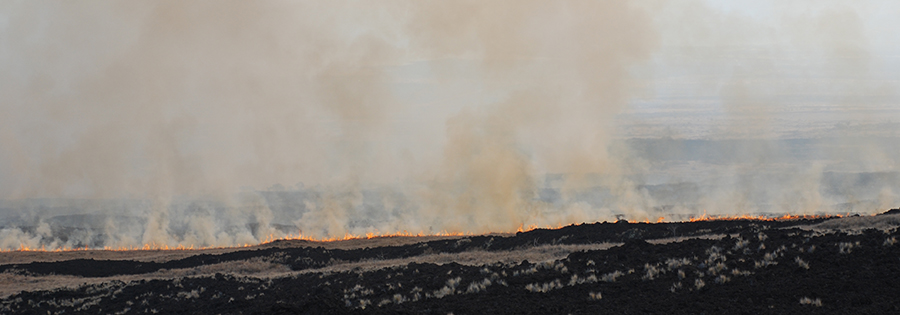
July 5, 2010 Kekaha fire Oweowe makai of Mamalahoa Highway. Photo courtesy of Yvonne Yarber Carter
Wildfires are an extreme threat to dry forests, and are increasing due to:
- the spread of fire-prone invasive grasses and shrubs
- increasing ignitions caused by humans, especially along roadsides
- a warming, drying climate
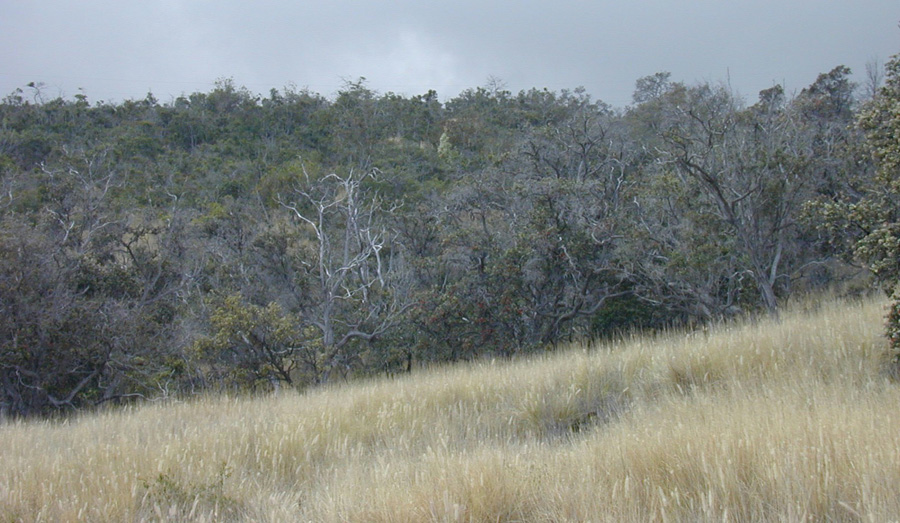
Invasive fountain grass encroaches upon old growth native dryland lama forest. Photo courtesy of Susan Cordell.
The following fact sheet from the Pacific Fire Exchange provides an excellent overview of wildfire in Hawaii: PFX Fact Sheet: Wildfire in Hawaii
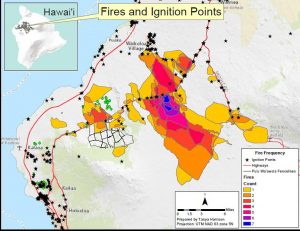
Fires and Ignition Points in North Kona – Note roadside ignition points. Map Credit: Tanya Harrison
Wildfire Protection Tools
Creating and maintaining fuel breaks which are cleared of invasive fire-prone grasses and shrubs are the main tools being used to help protect dry forest areas from wildfire. Some areas are also using managed grazing by cattle or goats to keep fuel breaks clear of fire-prone vegetation. Both of these tactics are being used to protect the dry forest at the Pu’uwa’awa’a Forest Reserve on Hawaii Island. Read about these management actions in the following factsheet:
Fire History and Risk at Pu’u Wa’awa’a
Another important factor to take into consideration in Hawaii is understanding and anticipating shorter term climate variation caused by the El Niño-Southern Oscillation (ENSO). This naturally recurring phenomenon can increase the risk of wildland fires in the Hawaiian islands.
The phase of ENSO and the strength of the event can usually be identified several months in advance, therefore, resource managers can make the necessary adjustments in restoration schedules or take the necessary precautions in fire management activities.”
To learn more about ENSO, its impacts and considerations for resource managers, please refer to the following fact sheet:
Impacts of El Niño on Climate at Pu‘u Wa‘awa‘a
You can find NOAA’s latest ENSO forecast here: ENSO Forecasts: NOAA Physical Sciences Laboratory
Another tool being used on the mainland and being investigated for Hawaii are greenstrips composed of fire-resistant vegetation, as described in the following research paper: Greenstrips in Hawaii – Can they be used to protect high value ecosystems from wildfire?
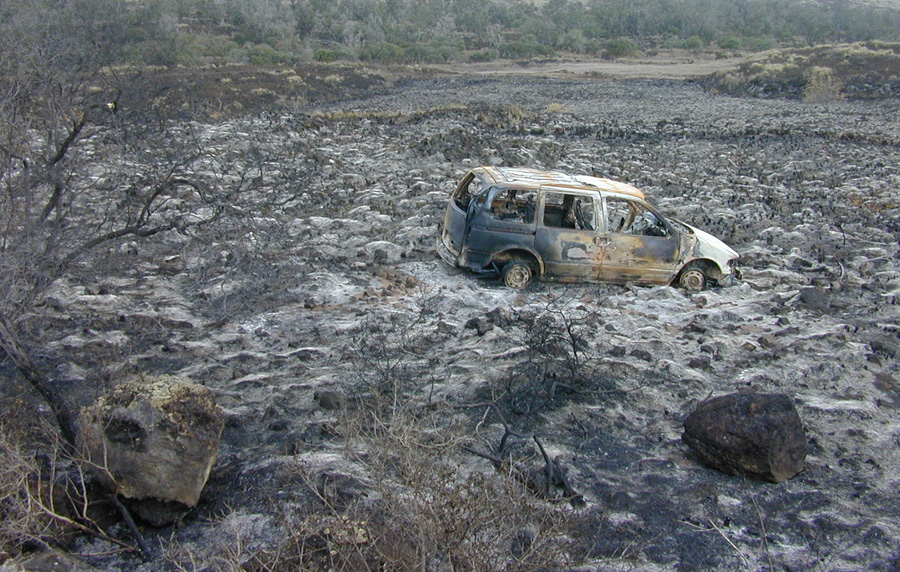
The effect of a fast burning fountain grass fire on native dry forest. Photo courtesy of Susan Cordell
Additional Information on Wildfires:
- The Pacific Fire Exchange was formed in 2011 by several organizations to faciltate the sharing of fire science research, knowledge and best practices and enable collaboration among all stakeholders. Numerous resources are available at their website: pacificfireexchange.org
- The Hawai‘i Wildfire Management Organization (HWMO) is a non-profit committed to helping the people and places of Hawaii be wildfire-safe and wildfire-ready. Visit their website at: www.hawaiiwildfire.org
- The following Personal Wildland Fire Action Guide by HWMO is an excellent resource for protecting your home and property from wildfires: Ready, Set, Go!
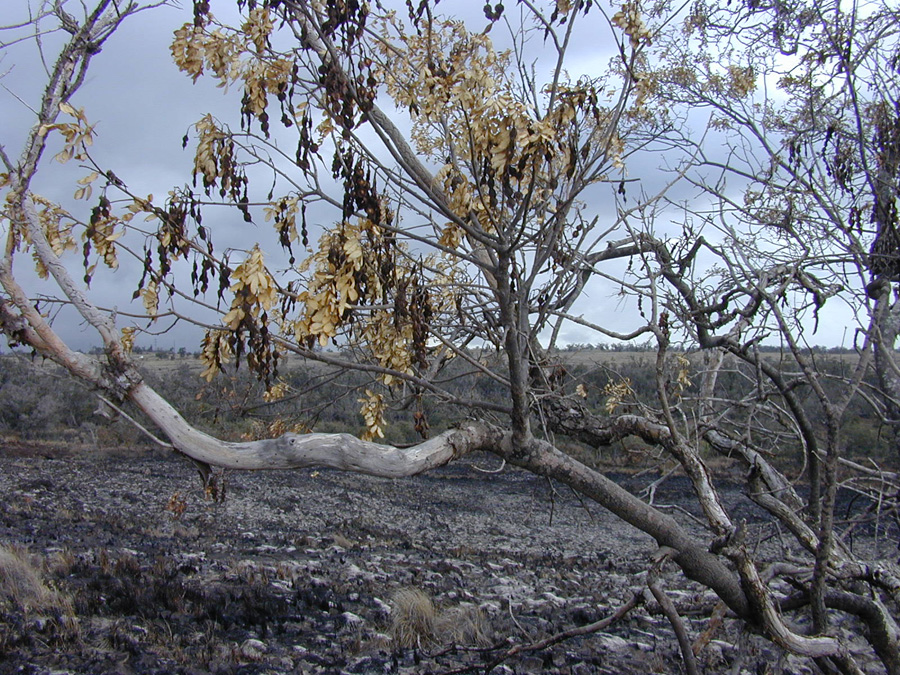
A burned native dryland Mamane tree. Photo courtesy of Susan Cordell.
- Different approaches for managing fountain grass are presented in Effects of cattle grazing…and prescribed burning on fountain grass fuel loading in Hawai`i.
- The Pohakuloa Training Area contains several dry forest remnants that are protected by a system of fire breaks: Analysis of Fire History and Management Concerns at Pohakuloa Training Area. 2002
